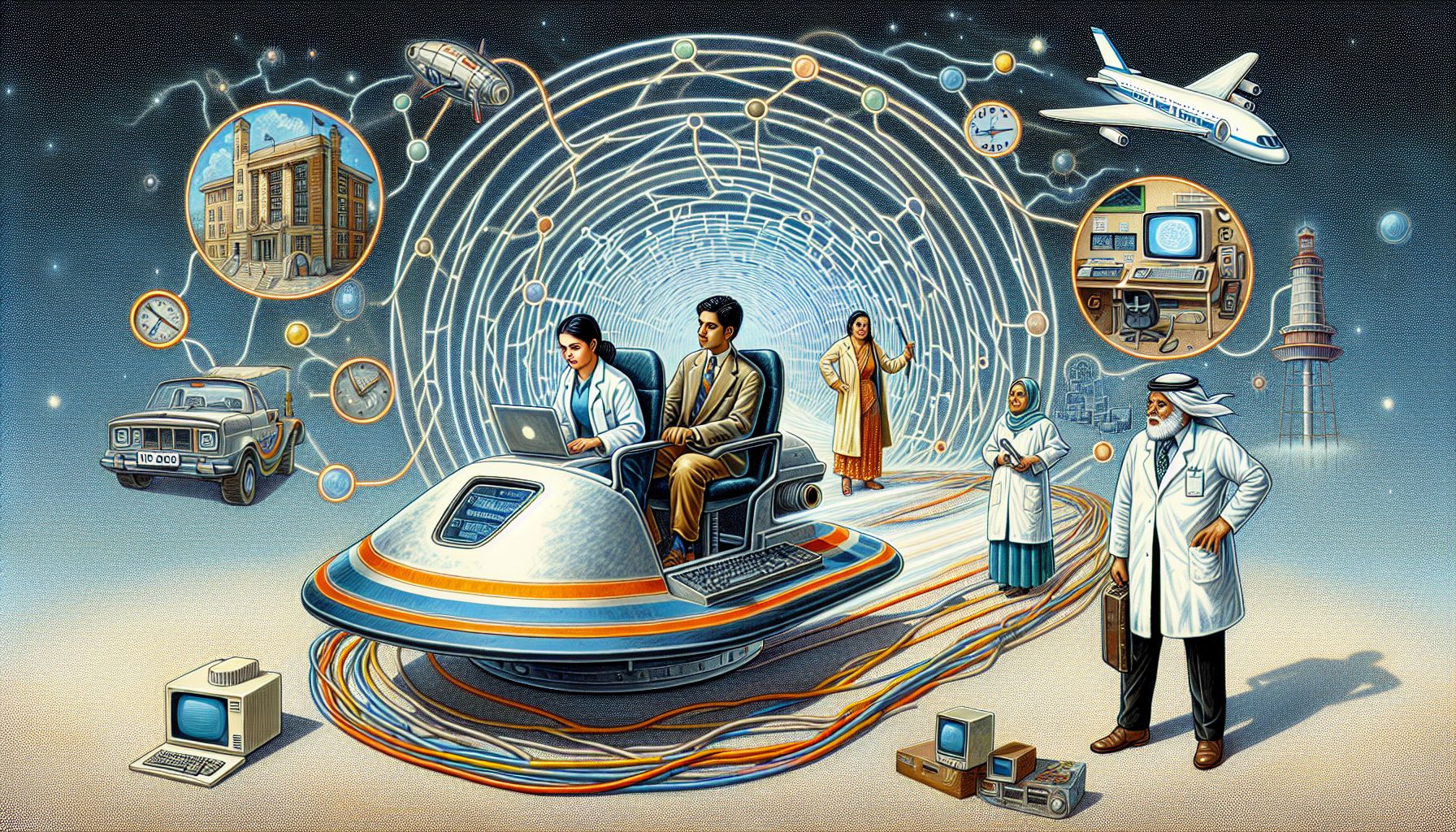📌 Let’s explore the topic in depth and see what insights we can uncover.
⚡ “Do you remember a time when ‘logging on’ meant the screech of a dial-up connection? Get ready to scroll down the memory lane as we rewind to the era where the Internet was just a fledgling concept!”
The internet, the vast interconnected web that we know today, was once just a twinkling in the eyes of visionaries. It started as an experimental network of computers, blossomed into a valuable tool for academia, and then exploded into the global platform we use daily for everything from shopping to socializing. The internet, in its relatively short lifespan, has revolutionized the way we live, work, and play. But how did it all begin? Join us on a time-travelling adventure back to the internet’s infancy, where we’ll explore its major milestones and see how it grew from a fledgling idea to the colossal digital landscape it is today. We’ll journey through the development of the internet, highlighting pivotal moments and technological advancements that have shaped our online experience. Buckle up, it’s going to be quite a ride! 🚀
💡 The Idea and Early Development

"Surfing the Digital Waves of Internet's Childhood"
The internet’s journey started in the late 1960s with the United States Department of Defense’s Advanced Research Projects Agency Network (ARPANET). The ARPANET was designed to be a decentralized network that could survive a nuclear attack. The concept was that if one part of the network was destroyed, the rest of the network would continue to function. In 1969, the first message was sent over the ARPANET from a computer at UCLA to a computer at Stanford. Symbolically, this could be considered as the internet’s first baby steps. However, the system crashed before the full message, intended to be “login,” could be sent, resulting in the first message over the ARPANET being just “lo.”
🌐 The Birth of the World Wide Web
While the ARPANET laid the groundwork, the internet as we know it today didn’t truly take shape until the creation of the World Wide Web (WWW) by Sir Tim Berners-Lee in 1989. Working at CERN, the European physics research center, Berners-Lee proposed a system to facilitate the sharing and updating of information among researchers. The WWW was a game-changer because it introduced the concept of hypertext - a method of linking and sharing information on the internet. It made the internet more usable and accessible to non-technical people. By 1991, the World Wide Web was open to the public, and the first web page was published. It was a simple text page, explaining what the WWW was and how to use it. From this humble beginning, the WWW has grown exponentially. Today, there are over 1.9 billion websites on the internet, covering every topic imaginable.
📧 Email and the Dawn of Digital Communication
One of the internet’s most enduring uses has been as a tool for communication. The first email was sent by Ray Tomlinson in 1971. He also introduced the “@” symbol in email addresses, which is still in use today. Email revolutionized communication, making it possible to send messages instantly across the globe. In the mid-1990s, the popularity of email exploded with the advent of free, web-based email services like Hotmail. These services made email accessible to the general public, and it quickly became a primary form of communication.
🚀 The Dot-Com Boom and the Rise of E-commerce
The mid to late 1990s saw the rapid growth of the commercial internet, often referred to as the dot-com boom. Companies were rushing to establish an online presence, and investors were eager to capitalize on the potential of the internet. This period saw the birth of many iconic internet companies, including Amazon and eBay, which pioneered the e-commerce industry. During this time, the internet also saw tremendous technological advancements. The introduction of JavaScript and CSS made websites more dynamic and visually appealing. Search engines like Google were launched, making it easier for people to navigate the vast amount of information on the web.
💬 Social Media and the Democratization of the Internet
In the early 2000s, the internet began to evolve from a one-way communication channel into a platform for user-generated content. This shift was driven by the rise of social media platforms like Facebook, Twitter, and YouTube. These platforms gave users the ability to create and share their own content, leading to an explosion of user-generated content and the democratization of the internet. The advent of social media has transformed the way we communicate, consume information, and even the way businesses operate. Today, social media is an integral part of our daily lives, influencing everything from politics to pop culture.
🧭 Conclusion
From the first message sent over the ARPANET to the rise of social media, the internet has come a long way since its infancy. It has evolved from a military project to a global platform that influences nearly every aspect of our lives. The journey of the internet is a testament to human innovation and our relentless pursuit of knowledge and connection. As we look back at the milestones of the internet, it’s clear that it has been a whirlwind of invention and reinvention. Each development, from email to the World Wide Web, from search engines to social media, has not only transformed the internet but also reshaped our world. Who knows what the future holds for the internet? But one thing is certain: the internet will continue to evolve, surprise, and redefine the boundaries of technology and human interaction. Here’s to the next chapter in the internet’s exciting journey. 🥂
🤖 Stay tuned as we decode the future of innovation!
